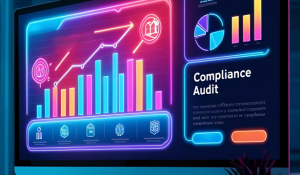As the regulatory environment for connected devices becomes more demanding, legal risk increasingly centers around one question: Can you prove you exercised due diligence?
The days of vague assurances and reactive explanations are over. Regulators and auditors now expect detailed, verifiable evidence of risk awareness, governance, and mitigation. For CISOs and legal teams, that means aligning on audit-readiness as a shared responsibility—one that starts long before the auditor’s call.
Here’s how to prepare effectively.
What Auditors Will Ask For—and How to Prepare
Auditors are looking for structured, transparent documentation across key areas of security and compliance. Typical requests include:
- SBOMs and Software Transparency Artifacts
SBOMs should be accurate, versioned, and mapped to the exact product builds under review. Auditors may also ask for evidence of how SBOMs were generated and maintained over time. - Vulnerability Findings and Remediation Records
Regulators will want proof that you didn’t just identify vulnerabilities—you acted on them. This includes timestamps, triage justifications, mitigation status, and VEX statements (where applicable). - Compliance Policies and Enforcement Mechanisms
Your organization should have clearly documented policies tied to regulatory requirements (e.g., CRA, Cyber Trust Mark, FDA 524B) and evidence that these policies are enforced in tooling or process (such as policy violations in CI/CD pipelines). - Audit Trail and Change Management
A reliable audit trail showing who changed what, when, and why—especially around component metadata and vulnerability statuses—is key to demonstrating internal control and governance.
Finite State provides native capabilities across all of these areas, making it significantly easier to generate audit-ready documentation on demand.
Reducing Legal Exposure Through Transparency and Traceability
From a legal risk perspective, transparency is protection. The more you can demonstrate visibility, control, and consistency in your compliance posture, the stronger your defense in the event of an incident or regulatory inquiry.
Finite State helps CISOs and legal teams reduce exposure by:
- Ensuring traceability of all component changes, findings updates, and SBOM modifications.
- Enabling VEX documentation for each finding, including justification, exploitability, and mitigation context.
- Allowing legal teams to review and lock down SBOM exports and audit reports in approved formats (e.g., CycloneDX + VEX).
By shifting from anecdotal reporting to system-enforced documentation, organizations build a stronger legal position and reduce ambiguity in regulator interactions.
Managing Supply Chain Contracts and Liability
One often-overlooked legal dimension of audit readiness is the allocation of security responsibility across the supply chain. CISOs should work closely with legal teams to:
- Incorporate SBOM requirements into supplier contracts and ensure timely delivery of these artifacts.
- Define vulnerability disclosure expectations, including timelines for remediation, notification, and VEX documentation.
- Clarify indemnification and liability language tied to security defects, third-party components, or non-compliant software.
Finite State supports this work by allowing you to ingest, assess, and monitor third-party SBOMs, giving legal and security teams the data they need to hold vendors accountable.
Conclusion: Turn Legal Uncertainty Into Security Confidence
As the line between cybersecurity and regulatory liability blurs, audit readiness must become a shared imperative across legal and technical teams. Demonstrating due diligence is no longer about responding to an audit—it’s about proving, with precision, that your organization has been continuously accountable for software risk.
Finite State bridges the gap between compliance strategy and evidentiary execution. From component traceability to VEX validation and supplier oversight, it equips CISOs and legal teams with the tools and artifacts needed to defend decisions, satisfy auditors, and negotiate from a position of strength.
With increasing regulatory scrutiny, your best legal defense is a proactive, well-documented offense.
Don’t wait for the regulators to test your readiness. Let us do it first.
Subscribe to Our Blog
Get the latest posts delivered straight to your inbox weekly.
Share this
You May Also Like
These Related Stories

Getting Audit-Ready with Finite State: A CISO’s Guide to Regulatory Compliance

Mistakes to Avoid in Your CRA Readiness Strategy


